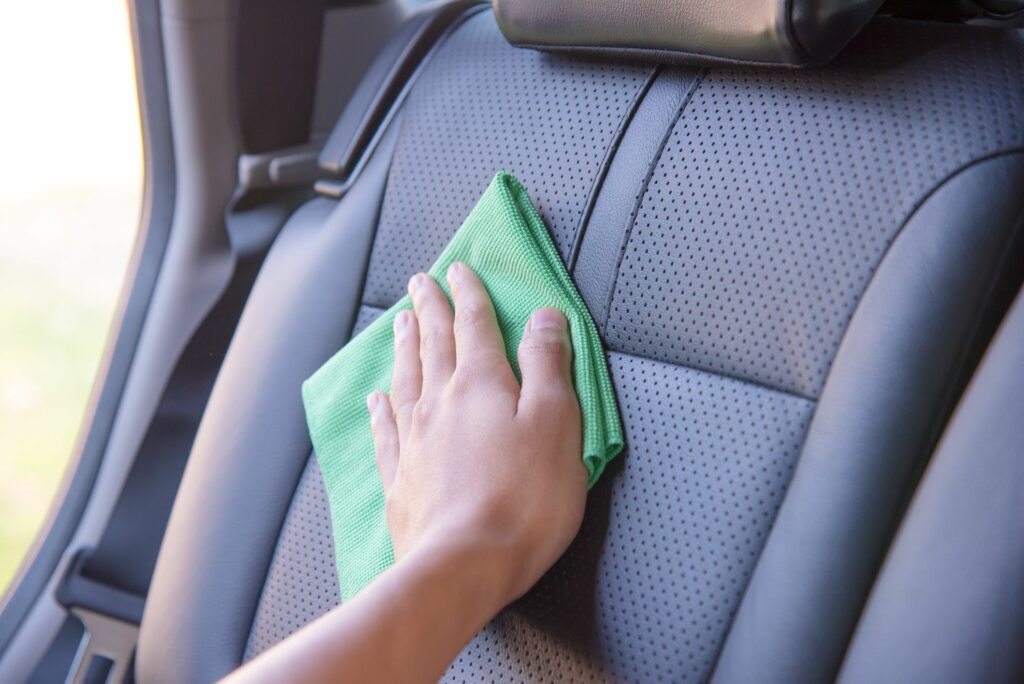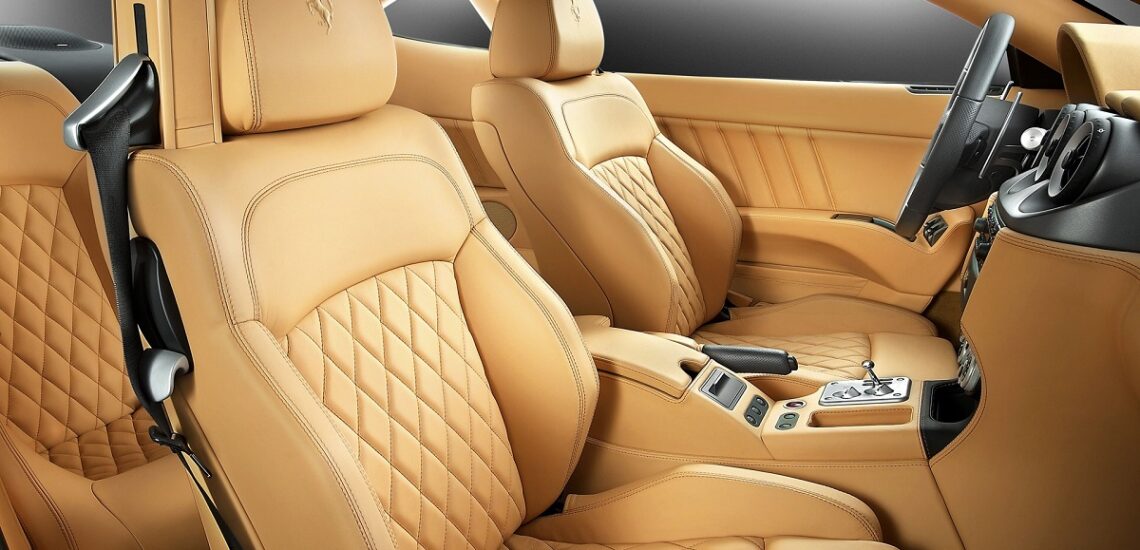Koltuklar muhtemelen bir arabanın en az değer verilen parçasıdır. Rahat olmayı severiz, ancak nasıl çalıştıkları hakkında hiçbir fikrimiz yoktur. Eğer iyi bilgili olsaydık, “mobilya” veya “sandalye” gibi ilkel jargonları pek kullanmazdık. En karmaşık tasarım, mühendislik ve teknolojik şaheser bazen opak döşemenin altında gizlidir. Arabanın çok pahalı ve ağır bir unsuru olduğu için, reklamda veya bir gazetecilik test sürüşü raporunda olduğundan çok daha fazla tasarım ve üretimde dikkate alınır.
İç mekanın önemli bir bölümünü kaplayan koltuklar, tasarımcılar için son derece önemlidir. Sürücü için koltuk, araba ile fiziksel iletişimin ana kanalıdır: vücudun yüzeyinin üçte biri onunla temas halindedir. Avrupa çalışmaları, ortalama bir sürücünün hayatı boyunca arabada yaklaşık 22 bin saat geçirdiğini göstermektedir. Ve bugün çok düşük kalitede koltuklar sık sık bulunmasa da, sürücülerin yaklaşık %75’i bir dereceye kadar sırt problemlerinden şikayetçidir. Ve ayrıca boyun ağrısı, dolaşım zorlukları, erken yorgunluk… İkincisinden kaynaklanan konsantrasyon kaybı, Avrupa’daki ciddi yol kazalarının üçte birinin nedenidir. Ve tüm bunlardan sonra, bunlara sadece “sandalye” diyorsunuz.
Her ne kadar her şey mobilya teknolojileriyle başlamış olsa da. 20. yüzyılın başına kadar, at arabası olmayan arabalar, bir büyükannenin kanepesi gibi yaylı koltuklarla donatılmıştı: bükülmüş metal yaylardan oluşan bir set, küçük yumuşak bir astarla deri ile kaplanmıştı. 1900’lerden bu yana, kauçuklaştırılmış olanlar da dahil olmak üzere hayvan kılından hindistan cevizi ipliğine kadar doğal liflerin kullanımıyla bu özel katman geliştirildi. 1930’larda, ilk olarak lateks olan bir köpük ortaya çıktı. Yaylı olanlara kıyasla koltukları daha ucuz hale getirdi. 1960’lardan bu yana, çeşitli türevleri olan daha da uygun fiyatlı poliüretan köpük otomotiv sektörüne girdi.
30 yıl önce bile, en iyi araba koltuklarının bir yaylı çerçeve ve kalıplanmış bir köpük kabuğunu birleştirdiğine inanılıyordu, ancak ekonomik kaygılar 1990’ların başında “kanepe” tasarımını geçersiz kıldı. Koltuk yayları bugün hala kullanılıyor, ancak köpük için göze çarpmayan bir destek olarak S şeklinde bir tele basitleştirildi.
Her durumda, metal veya kompozitlerden yapılmış çerçeve temel görevi görür. Son yıllarda, öncelikle pasif güvenliğin daha katı gereksinimleri nedeniyle gücü birçok kez arttı. En azından kemer tutucular veya hatta şişirilebilir yastıklar artık koltuklara takılıyor ve koltukların kendilerinin çeşitli parametrelerde güç açısından test edilmesi gerekiyor. Bu standartlar ve standart koltukların tasarımına yönelik bilimsel bir yaklaşımın geliştirilmesi, ayarlanmış koltuklar için pazarı neredeyse öldürdü. Onlarla başlayan ünlü Recaro şirketi bile, yaklaşık on yıldır sivil araba koltukları üretmiyor, sadece yan tarafta “isim takası” yapıyor.
Araba koltuklarını profesyonel olarak iki kez değerlendirmek gelenekseldir. Birincil algı, bir araba galerisindeki müşteri gibi, koltukta olduğunuz ilk 10-15 saniye boyunca statiktir. Koltuk, arabaya binme sürecinize müdahale ediyor mu? Ne kadar zor? Sıkışık değil misiniz? İyi tutuyor mu? Ve en önemlisi ― insan vücudunun döşemeye uyguladığı basınçtan kaynaklanan tepkisel kuvvetlerin nasıl dağıtıldığı. Basitçe ifade etmek gerekirse, otomotiv testlerinde sıklıkla bahsedilen koltuğun “profili” nedir?
Daha sonra, en az bir veya iki saatlik bir yolculuk sırasında, dinamik konforun bir resmi oluşur. Tüm bu faktörler, algıları hareket halinde değişebilse de, koltuğun çok çeşitli titreşimleri nasıl azalttığını da içerir. Sonuçta, sadece süspansiyon yumuşak sürüşten sorumlu değildir, aynı zamanda lastikler, şasi ve koltukların üçlüsü de sorumludur.
Bilimsel olarak konuşursak, çerçeve, elastik elemanlar, köpük birlikte ve ayrı ayrı dört ila sekiz hertz arasındaki en rahatsız edici frekans aralığında rezonanslardan kaçınmalıdır. 0,1 ila 0,6 Hz arasındaki frekanslardaki rezonanslar hareket hastalığına neden olur ― büyükbabanızın Volga’sının sakinleştirici arka koltuğunu hatırlıyor musunuz? Bükülmüş yaylardaki çerçevelerin reddedilmesi, zayıf vestibüler aparatı olan kişilerin hayatını önemli ölçüde kolaylaştırdı. Modern koltukların doğal titreşim frekansları çok daha yüksektir. Ancak titreşimleri iletmemeleri için çok sert de olmamalıdırlar.

Mükemmel bir koltuk nasıl yapılır? Bu konu hakkındaki bilimsel araştırmalar sadece 1940’larda başladı ve sonuçların seri üretimde fark edilir bir etki yaratması iki ila üç on yıl sürdü, her yerde değil. Ancak artık veri eksikliği yok ve kimse keyfine göre veya deneme yanılma yöntemiyle çalışmıyor gibi görünüyor. Çok sayıda çalışma bazen birbirleriyle çelişiyor. Özellikle en önemli soruda – vücuttan gelen yükün koltuğa nasıl dağıtılması gerektiği.
Bilim insanlarının azınlığı, örneğin eski Fransız arabalarında olduğu gibi, bir koltuğu eşit şekilde yumuşak yapmanın yeterli olduğuna inanıyor. Bilim insanlarının çoğunluğu – sertliğin değişmesi gerektiğine inanıyor, çünkü farklı vücut parçaları yükü eşit şekilde taşımıyor. Koltuğu vücudun en dayanıklı kısımlarıyla temas noktalarında daha yoğun hale getirerek hassas dokular üzerindeki baskıyı azaltmak mümkündür. Bunlar, iskiyal tüberozitelerin altındaki kalçalar ve alt sırt bölgesidir.
Yastık ile koltuk arkalığı arasındaki açı, kişinin yastık üzerinde “kaymaması” için seçilir, çünkü o zaman dokuların yer değiştirmesi, alt vücut kısmındaki sıkıştırmadan kaynaklanan gerginliğe eklenir. Aynı zamanda, oturanlar uzun bir yolculukta basınç haritasını önemli ölçüde değiştirmeden pozisyonlarını değiştirebilmelidir. Bir kişi için en rahat pozisyonda, eklemlerin her biri yaklaşık olarak dönüş aralığının ortasındadır. Tüm hesaplamalar kalça ekleminin merkezi, yani sözde H noktası (kalça noktası, ancak bazı mühendisler R indeksi kullanır) ile ilgili olarak yapılır.
Döşemenin vücut ağırlığı altında ortalama 4-5 cm deforme olduğu dikkate alınır. Ekstra yumuşak koltuklarda – yaklaşık 8 cm. Oturma pozisyonunun konforu, yüksekliğine, yani H noktasının araç gövdesinin tabanından yukarıdaki konumuna bağlıdır. Sorun, tüm insanların farklı olmasıdır. Obez ABD sakinlerinin oranını veya Çinlilerin istatistiksel olarak düşük ortalama boyunu hatırlamak yeterlidir.
Beşinci kadın yüzdelik dilimi (yaklaşık 1,53 m boyunda bir kadın) ile 95. erkek yüzdelik dilimi (1,87 m) arasındaki geleneksel aralık pazardan pazara farklılık gösterir. Ancak bu çerçevede bile üreticiler müşterilerin yalnızca %90’ını memnun etmeyi başarırlar. Arabanın esas olarak kimin için üretileceğini seçmek zorundadırlar çünkü bir milyon ayarlama bile fiziğindeki farkı tam olarak telafi edemez. Ancak koltuk sadece vücudu alıp rahat bir şekilde yerleştirmemeli, aynı zamanda onu sabitlemelidir.
Ayrıca insanların daha uzun boylu olduğuna dair kanıtlar da var: Amerikalılar ve Avrupalılar her on yılda bir santimetre daha uzun oluyor. Bir zamanlar DIN standartlarına göre en az 160 mm olarak belirlenen ön koltukların uzunlamasına ayar aralıklarının bugün bazen neredeyse 300’e ulaşması şaşırtıcı değil. Yükseklik ayar kolu genellikle 60-70 mm’dir.
Mikro iklim farklı bir hikaye. Vücudumuzun üçte biri koltukla temas halinde olduğundan, termal konfor sağlamadaki rolü muazzamdır. Günün ve yılın herhangi bir saatinde optimum yüzey sıcaklığı 23 ºС’dir. Şaşırtıcı olmayan bir şekilde, ısıtmalı koltuklar 1966 gibi erken bir tarihte Cadillac otomobiller için bir seçenek olarak ortaya çıktı. Ancak ısı değişimi iki yönlü bir işlemdir. Döşeme, insan vücudunun termal enerjisinin yaklaşık 75 W/m²’sini emmelidir. Basitçe söylemek gerekirse, hava ve terin geçmesine izin vermelidir.
Otomobil pazarındaki ek kılıflar hariç, suni deriden yapılmış döşeme bu konuda en kötü seçenektir. Doğal olanı, biraz da olsa, “nefes alır” – ancak mikro drenajı sağlamak için derin bir doku sağlamak istenir. Aynı zamanda, şekillendirme köpüğü her durumda kalın olmalıdır, çünkü %80’den fazla sıkıştırıldığında neredeyse geçirimsiz hale gelir.
Ancak, en ucuzu bile olsa kumaş daha iyidir. Deri döşeme, yalnızca pahalı delme ve daha da pahalı havalandırma durumunda ısı giderme verimliliği açısından onunla karşılaştırılabilir. Kural olarak, fanlar havayı çıkarmak için çalışır. Bu, benzer bir sistemin Saab 9-5’te ilk kez piyasaya sürüldüğü 1997’den beri böyledir. Büyük olasılıkla, daha verimli küçük ısı pompaları yakında koltuklara yerleştirilecektir. Klima prensibini kullanırlar – soğutucunun toplam durumu değiştiğinde ısının seçilmesi veya serbest bırakılması.
Mevcut eğilimler arasında, motor sporları ve spor otomobil endüstrisinde uzun zamandır yapıldığı gibi, kişisel yerleştirmelerin kullanımıyla belirli bir kişi için maksimum kişiselleştirme vardır. Ferrari uzun süredir yol arabaları için üç boyutta koltuk satarken, Porsche zaten 911 ve 718 modellerinin pist versiyonları için üç sertlik derecesine sahip “kovaların” bireysel kalıplanmasını sunmaktadır.
Seri üretilen arabalara gelince, üreticiler ayar sayısını artırmaya çalışmaktadır. Rekor sahibi, 2017’den beri her kalçanın yastıklarının uzunluğunda ve açısında bireysel değişiklikler de dahil olmak üzere 15 ayarlanabilir parametreye sahip koltuklar sunan Lincoln markasıdır. Amerikan stilinde ise 30 ayarlı koltuklar olarak adlandırılıyor, yani her ölçü iki yöne de değiştirilebiliyor.

Masaj hiç de şaşırtıcı değil, Ford F-150 pikaplarında bile sunuluyor. Koltuklara yerleştirilen basit sensörler yakında sürücünün nabzını izlemesini ve bir dikkat döngüsü konusunda uyarmasını sağlayacak. Elbette, seri ayrıca kişinin döşeme üzerindeki basıncının “haritasını” kontrol eden gelişmiş koltuk yükü sensörlerini de içerecek. Bu sadece koltuğun ayarlarının optimize edilmesi için değil, aynı zamanda aktif güvenlik sistemlerinin ayarlanması için de yararlıdır. Ve hatta hırsızlık önleme sistemleri için bile! Yani yakın gelecekte gösterge panelinde “iskiyal tüberoziteleriniz tanındı, iyi yolculuklar” gibi bir şeyi kolayca okuyabiliriz.
Orijinalini buradan okuyabilirsiniz: https://www.drive.ru/technic/5ed0dcc6ec05c4ac13000157.html

Yayımlanmış Ağustos 12, 2021 • Okuma süresi: 8 dakika





